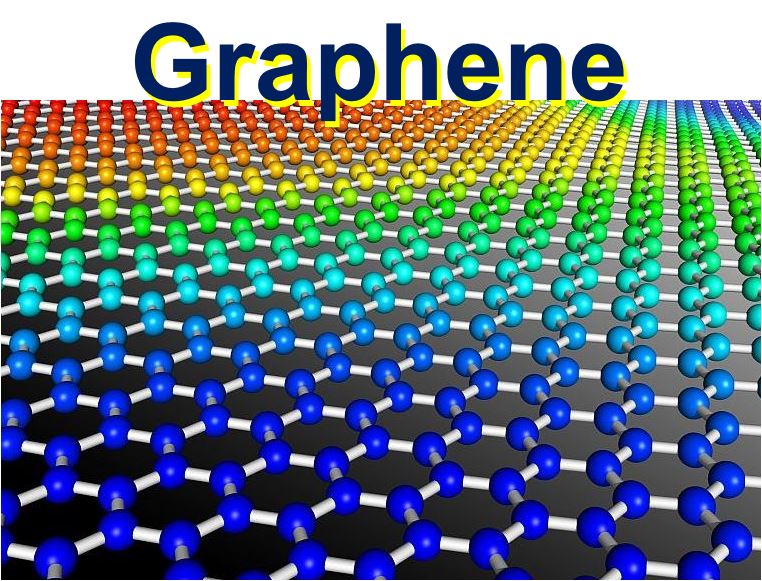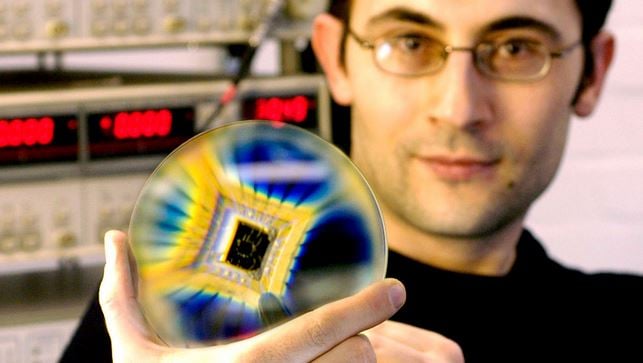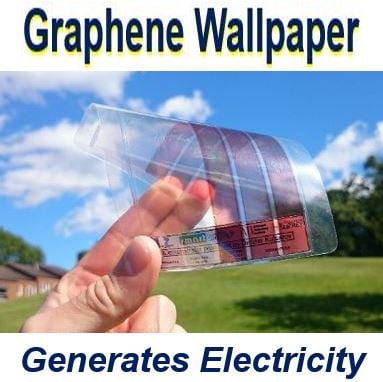Graphene added to thin rubber films makes them amazingly strong, flexible and stretchy, say members of a scientific team whose research started when they were trying to create an improved and more desirable condom as part of a Bill & Melinda Gates Foundation challenge.
Graphene, a one-atom thick layer of pure carbon, arranged in a tightly-packed layer of carbon atoms bonded together in a hexagonal honeycomb lattice, is the thinnest, lightest and strongest material we know of. One square metre of graphene weights just 0.77 milligrams (0.0000271 oz). It is about 200 times stronger than steel. It is also the world’s best conductor of electricity.
Dr. Aravind Vijayaraghavan, with colleagues from the National Graphene Institute at University of Manchester in England, and Apex Medical Technologies in San Diego, USA, wrote about their study and achievements in the scientific journal Carbon (citation below).
 The scientists tested (left) latex, (middle) graphene oxide and graphene samples. (Image: graphene.manchester.ac.uk)
The scientists tested (left) latex, (middle) graphene oxide and graphene samples. (Image: graphene.manchester.ac.uk)
The authors said that by just adding a tiny amount of graphene to natural and artificial rubber films, they found that both their strength and elasticity increased by up to 50%.
These rubber films currently have hundreds of uses for everyday products, including gloves, clothing and condoms. Graphene rubber could literally transform several industries.
Scientists added graphene to artificial and natural rubber
In this latest research, the scientists tested two different types of rubbery materials: 1. A natural rubber consisting of polyisoprene, and 2. Polyurethane, an artificial rubber.
In almost every single case, they found that the resulting composite material – the mixture of rubber and graphene – could be stretched considerably further and with significantly greater force before breaking.
 Graphene is super-light, ultra-tough, and extremely thin. It is 200 times stronger than steel, but is incredibly flexible. It is the thinnest, lightest and strongest material we know of, and also the best conductor of electricity.
Graphene is super-light, ultra-tough, and extremely thin. It is 200 times stronger than steel, but is incredibly flexible. It is the thinnest, lightest and strongest material we know of, and also the best conductor of electricity.
In fact, the addition of a minuscule amount of graphene – just 0.1% of graphene – was all that was required to make the thin rubber films 50% stronger.
Dr. Vijayaraghavan, who heads the The University of Manchester’s Nano-functional Materials Group, explained:
“A composite is a material which contains two parts, a matrix which is soft and light and a filler which is strong. Taken together, you get something which is both light and strong. This is the principle behind carbon fibre composites used in sports cars, or Kevlar composites used in body armour.”
“In this case, we have made a composite of rubber, which is soft and stretchy but fragile, with graphene and the resulting material is both stronger and stretcher.”
Graphene Oxide worked best
Dr. Maria Iliut, a research associate who has been working in Dr. Vijayaraghavan’s group since February 2014, said regarding the production of the composite material:
“We use a form of graphene called graphene oxide, which unlike graphene is stable as a dispersion in water. The rubber materials are also in a form that is stable in water, allowing us to combine them before forming thin films with a process called dip moulding.”
“The important thing here is that because these films are so thin, we need a strengthening filler which is also very thin. Fortunately, graphene is both the thinnest and strongest material we know of.”
 Other Potential Uses 1: Graphene has many possible applications in electronics. With it we could make faster transistors, semiconductors, and bendable phones. (Image: graphene.manchester.ac.uk)
Other Potential Uses 1: Graphene has many possible applications in electronics. With it we could make faster transistors, semiconductors, and bendable phones. (Image: graphene.manchester.ac.uk)
All started with a condom quest
The authors said their study emerged from a call by the Bill & Melinda Gates Foundation to create a better and more desirable condom – one that people prefer to current ones, but is also super-safe.
The scientists say their new composite material has potential uses for many products used in everyday life and in a number of industries. It paves the way for thinner, stretchier and stronger condoms, surgical gloves, clothing, and scores of other items.
 Other Potential Uses 2: Dr Leonid Ponomarenko, from the University of Manchester, showing his research sample – graphene quantum dots on a chip. (Image: graphene.manchester.ac.uk)
Other Potential Uses 2: Dr Leonid Ponomarenko, from the University of Manchester, showing his research sample – graphene quantum dots on a chip. (Image: graphene.manchester.ac.uk)
Regarding using this new composite material for creating new types of condoms and other products, Dr Vijayaraghavan said:
“Our thinking was that if we could make the rubber used in condoms stronger and stretchier, then you could use that to make even thinner condoms which would feel better without breaking.”
“Similar arguments can be made for using this material to make better gloves, sportswear, medical devices and so on. We are seeing considerable industrial interest in this area and we hope more companies will want to get involved in the commercial opportunities this research could create.”
 (Left) Prof. Konstya Novoselov and (Right) Prof. Andre Geim. The two scientists found a way to make graphene by peeling sticky tape off graphite. For their pioneering work, they were awarded the Nobel Prize for Physics in 2010. (Image: adapted from rsc.org)
(Left) Prof. Konstya Novoselov and (Right) Prof. Andre Geim. The two scientists found a way to make graphene by peeling sticky tape off graphite. For their pioneering work, they were awarded the Nobel Prize for Physics in 2010. (Image: adapted from rsc.org)
Graphene will revolutionise everyday life
If you have ever used a pencil, you have probably made graphene. The thinnest material we know of is set to revolutionise virtually every part of our everyday lives.
The University of Manchester says that scientists’ fascination with this material stems from its amazing physical properties and the potential application that these properties offer for the future.
Although researchers knew that two-dimensional crystal graphene that was one-atom thick existed, nobody had managed to work out how to extract it from graphite.
In 2004, it was isolated by Professors Andre Geim and Kostya Novoselov, both from the University of Manchester. Eventually, the two scientists went on to win the Nobel Prize in Physics for their pioneering work.
 Other Potential Uses 3: We could soon be covering the walls of the rooms of our homes with a graphene wallpaper that produces electricity – enough for all our needs. (Image: surrey.ac.uk)
Other Potential Uses 3: We could soon be covering the walls of the rooms of our homes with a graphene wallpaper that produces electricity – enough for all our needs. (Image: surrey.ac.uk)
Graphene wallpaper to power your home
We could soon have wallpaper made with graphene that absorbs most of the heat and light in the rooms of our homes, and generates enough electricity for all our requirements. In other words, we would be able to tear up our contracts with power providers.
Scientists from the Advanced Technology Institute in the University of Surrey, UK, claim that their new graphene wallpaper could generate electricity even in the relatively dark rooms, where light is very dim. Seemingly dark rooms for us still have light in them – moths for example, can see perfectly well in environments that we would perceive as fairly dark.
The moth’s ability to ‘see in the dark’ inspired a team of scientists to adapt graphene to do the same.
Citation: “Graphene and water-based elastomers thin-film composites by dip-moulding,” Claudio Silva, Scott Herrick, Maria Iliut, Mark McGlothlin, and Aravind Vijayaraghavan. Carbon. 20th May 2016. DOI: 10.1016/j.carbon.2016.05.032.
